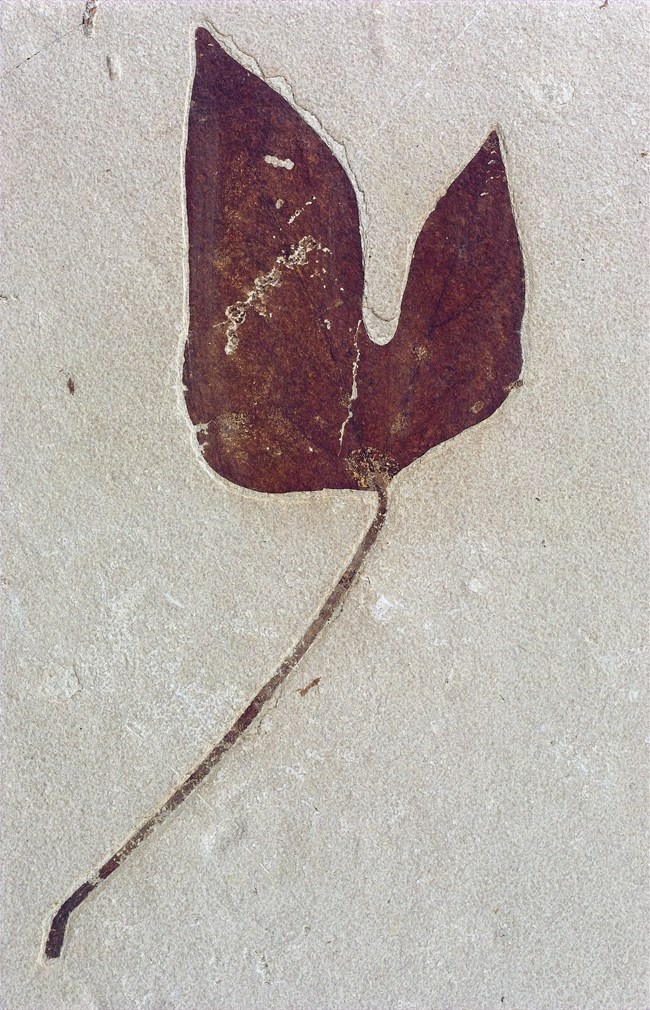
NPS Photo See some of the plant fossils that are on display in our visitor center exhibits. 
NPS Photo Gyrocarpus sp.Gyrocarpus sp. specimens (pictured above and to the right) demonstrate the challenge of identifying fossil plant species.

NPS Photo Palm - Palmites speciesOrder Arecales, Family AracaceaPalm inflorescences (a group of flowers arranged on a stem) and palm fronds (pictured here) are common fossil specimens from the FBM. Variation in morphology (the form and structure) of specimens indicates Fossil Lake may have been home to several palm species. No FBM palm species have been described as of yet. The abundance of large and complete palm frond specimens suggests there may have been palm trees near the shores of Fossil Lake. There are over 2,000 living palm species, found naturally in tropical, sub-tropical, and humid environments. Palm specimens are indicators of a warm and wet environment at Fossil Lake. 
NPS Photo Winged Fruit Species - Lagokarpos lacustrisOrder unknown, Family unknown"Hare-Fruit-Of Lakes" Lagos - Greek for "hare" (referencing rabbit-head shape of seed and wings) Karpos - Greek for "fruit" Lacustris - Latin for "of lakes and ponds" L. lacustris is recognizable by its spherical shaped seed body and dual set of wings which are characterized by a V shape. The wings indicate that fruit was wind dispersed (seeds carried by wind to new growing sites). Specimen wings range in size from 3 to 9 inches. It is known from fossil deposits in Wyoming, Utah, Colorado, Oregon, and British Columbia and is found exclusively in lake deposits, indicating it was a near-shore species. No modern fruits are known to share the specific characteristics of L. lacustris, and the Lagokarpos genus is thought to be extinct. Species of the living Gyrocarpus genus are, however, similar in form. This genus is found primarily in tropical and subtropical regions. 
NPS Photo Tree of Heaven - Ailanthus confuciiOrder Sapindales, Family SimaroubaceaeThere are about 100 modern species in the Simaroubaceae family, found primarily in tropical and subtropical regions. The Ailanthus genus has a disputed number of living species, somewhere between 5 and 10. They are commonly known as "Trees of Heaven." A. confucii is a winged fruit characterized by its centrally located seed. It is known from fossil deposits in North America, Asia, and Europe and is found almost exclusively in lake and pond deposits A. confucii specimens from the FBM are the oldest known representation of the Simaroubaceae family in North America, possibly the world. The modern Ailanthus altissima, native to China, was introduced in the United States in the 1700s as a fast-growing ornamental shade tree. Due to its ability to tolerate poor soil conditions and air quality, it has become an invasive species. 
NPS Photo Staghorn Fern - Platycerium speciesOrder Polypodiales, Family PolypodiaceaeThere are almost 20 living species in Platycerium genus. They are found primarily in tropical environments of Asia, South America, New Guinea, and Africa 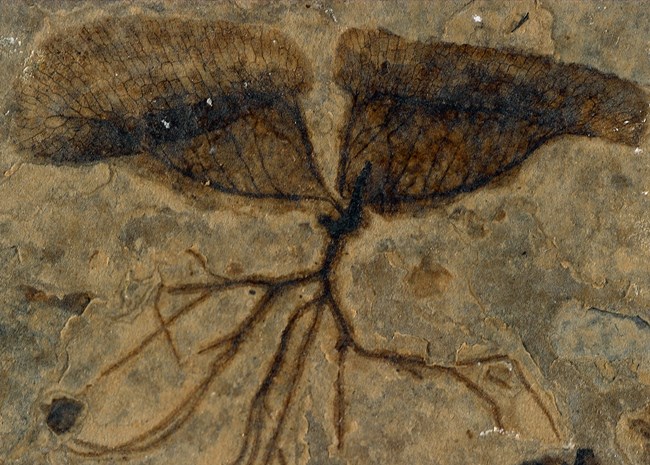
NPS Photo Water Fern - Salvinia preauriculataOrder Salviniales, Family SalviniaceaeThis aquatic species had 2 floating leaves and 1 root-like leaf which would hang below the water's surface. Living members of the Salvinia genus include 15 modern species found in tropical regions of Madagascar, Africa, West Indies, Europe, Asia, North and South America. They are only found in freshwater and spread rapidly in warm water. 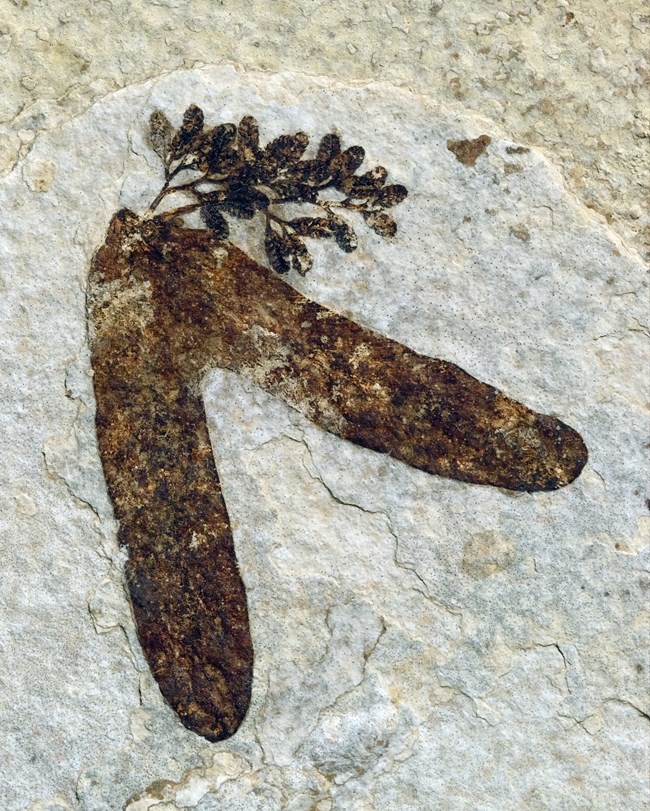
NPS Photo Climbing Fern - Lygodium kaulfussiOrder Schizaeales, Family LygodiaceaeLiving members of the Lygodium genus include 40 modern species found primarily in the tropical regions of Asia. They do not have a fixed growing season and will continue to grow throughout their life. The growing cycle lead to their common name, "climbing fern." 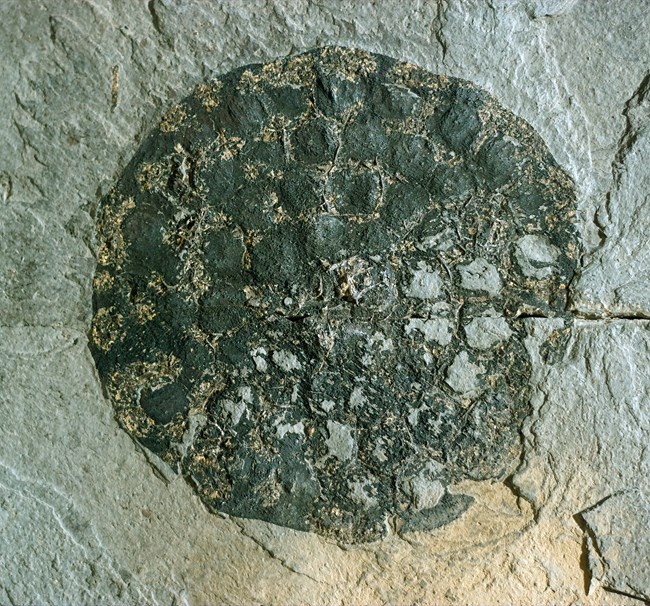
NPS Photo Lotus - Nelumbo speciesOrder Proteales, Family NelumbonaceaeThe modern Nelumbo genus contains 2 living species found in Asia, North America, and the Caribbean. They are aquatic plants restricted to freshwater and are characterized by large flowers and leaves. Fossil Lake may have been home to multiple species of the Nelumbo genus. FBM specimens include:
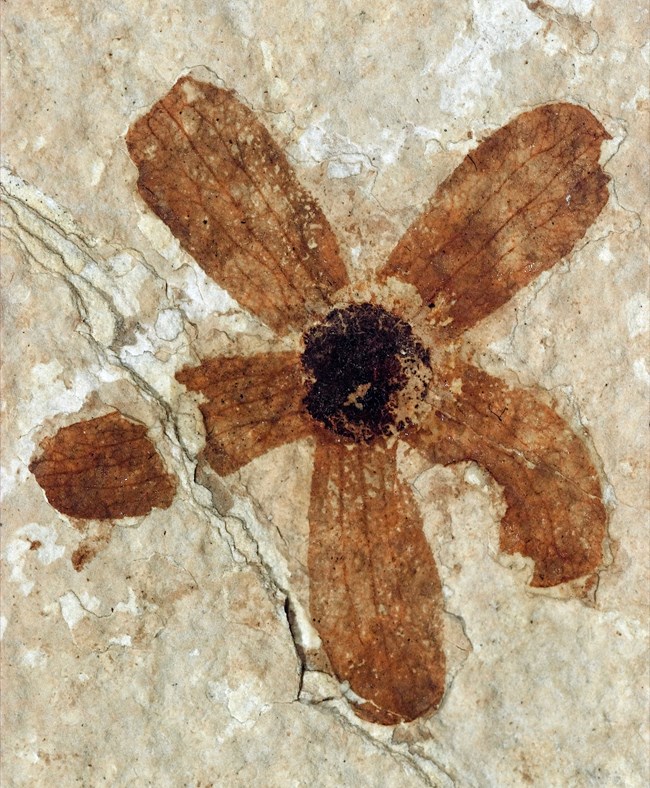
NPS Photo Flower-Like-Fruit - Chaneya tenuisAlthough resembling a flower, C. tenuis is actually a fruit. It is characterized by 5 petal-like wings. The Chaneya genus is known from fossil deposits in North America, Asia, and Europe.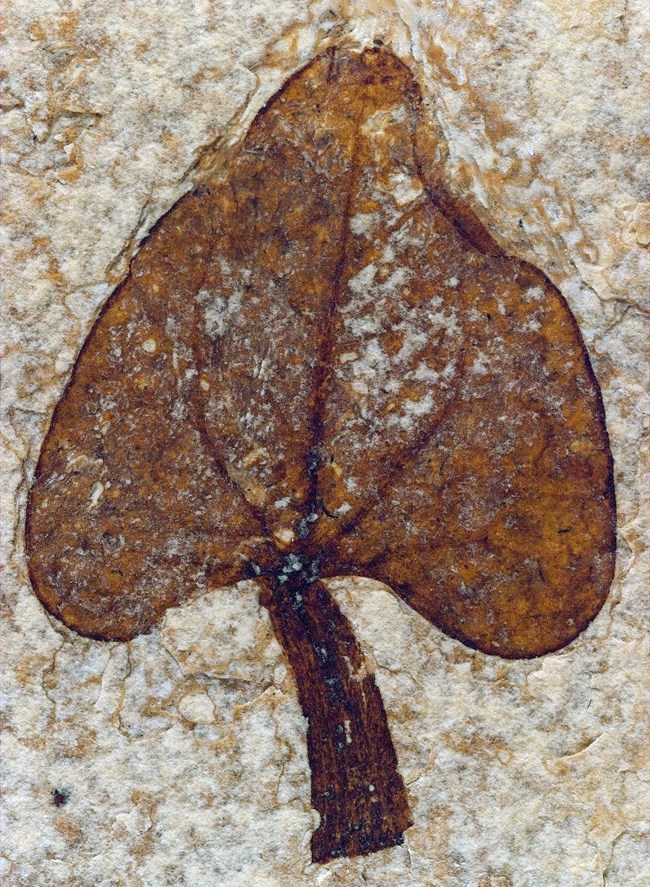
NPS Photo Birthwort - species unknownOrder Piperales, Family AristolochiaceaeModern members of the Aristolochiaceae family include about 400 living species and are found primarily in tropical regions. They are perennial (having a lifecycle longer than 2 years) and are working herbaceous plants (grow as non-woody shrubs or vines). Also commonly known as "pipe-vines." They are primarily pollinated by flies. The fossil plant pictured has not been described as a species. 
NPS Photo Soapberry - Deviacer wolfeiOrder Sapindales, Family SapindaceaeLiving members of the Sapindaceae family includes over 1,800 modern species found in temperate to tropical regions. Modern species include maple and the tropical lychee tree. 
NPS Photo WalnutThis seed has the appearance of a walnut.ReferencesGrande, Lance. 2013. The Lost World of Fossil Lake: Snapshots from Deep Time. Chicago: The University of Chicago Press.Jackson, David R., Art Gover, and Sarah Wurzbacher. “Tree-of-Heaven.” Penn State Extension, November 2, 2020. https://extension.psu.edu/tree-of-heaven. |
Last updated: September 26, 2025
